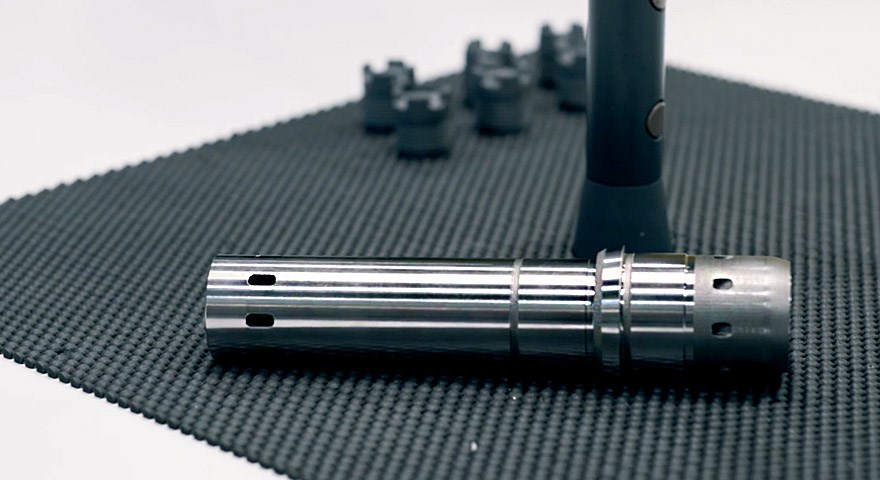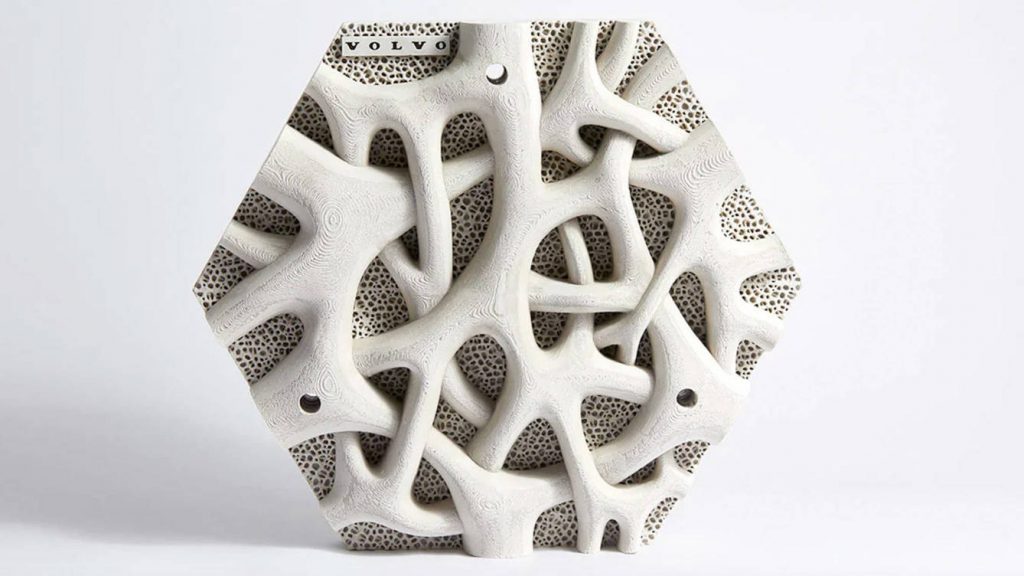The State of 3D Printing in Heavy Equipment
In the aerospace industry, there are plenty of research dollars to be had and the slightest improvement in weight reduction to an aircraft part can reduce fuel costs significantly. Though there is less of an impetus for innovating as quickly in the field of heavy equipment manufacturing, companies like Caterpillar, John Deere and Volvo CE are beginning to adopt 3D printing for more than just design and prototyping purposes.
In this article, we’ll try to understand at what stage of development the heavy equipment space is with regard to additive manufacturing (AM). It should be stated up front that it is highly likely that nearly all of these companies use 3D printing for prototyping and design purposes at the very least.
Caterpillar is a good place to start, in that it is the leading manufacturer of heavy equipment by revenue, pulling in $54.722 billion in 2018. The Fortune 100 company began using 3D printing in 1991 with a stereolithography machine and gradually expanded the use of the technology for prototyping purposes over time. This was done through team meetings and internal employee contests to design end parts for 3D printing.
In 2016, the firm launched its Additive Manufacturing Factory, which, at the time, hosted 10 industrial 3D printers, including a Carbon M1 3D printer, and a MicroFoundry. Caterpillar began 3D printing its first end part, a fuel swirler, via its Solar Turbines subsidiary. Using the M1, the company also began 3D printing an elastomeric grommet for aftermarket customers. In a partnership with FIT AG, Caterpillar is 3D printing aluminum and titanium parts. That three-year agreement was announced in 2017 and we have yet to hear about its outcome.
A subdivision of Volvo Group, Volvo Construction Equipment (CE) is another leader in the space, already deploying electric batteries in its smaller vehicles in the face of the climate crisis and government regulations. It even established a nearly-emission free quarry, which sounds like a bit of an oxymoron given that the quarry sells concrete, a material responsible for a huge amount of emissions—not to mention the overall negative impact of mining on our already collapsing ecosystem. The subsidiary benefits from the parallel work occurring in other Volvo Group companies, like Volvo Trucks, where 3D printing has reduced production time of assembly line manufacturing tools by 94 percent.
As part of its aftermarket services, Volvo CE began 3D printing spare parts for its machinery in 2018. The company focused primarily on plastic parts, fabricating cabin components, plastic coverings, and portions of air conditioning units on demand. Volvo CE also said that it was researching the 3D printing of metal spare parts in the future as well.
Though not as much of a power hitter as Caterpillar or Volvo, Finnish industrial machine company Metso has launched a “Digital Garage” dedicated to advancing its manufacturing process. Within that project is the firm’s work 3D printing end parts for its mining division. Specifically, Metso has 3D printed metal valves for use by a customer in an unspecified, but supposedly demanding application that requires them to withstand fast open-close cycles without maintenance. The design features small, intricate features and improves valve performance, according to the company.
Perhaps the most invested in any 3D printing technology in the space may be Sandvik, a Swedish manufacturer of machine tools, as well as mining and construction equipment. The company’s Additive Manufacturing Division manufactures titanium, nickel alloy, stainless steel and cobalt powders for AM. In 2019, Sandvik acquired a significant stake in Beam IT, a 3D printing service provider with over 20 years of experience.

Previously made as two parts, this sliding case used for water-powered, down-the-hole hammers is now printed as a single unit with improved water flow and performance. Image courtesy of Sandvik.
For LKAB Wassara, the division 3D printed streamlined sliding cases with integrated water channels for the company’s mining drills. Sandvik also 3D printed a diamond composite material, which could serve in the mining sector for its ultra-hard properties.
In a separate article on agricultural equipment, we will be covering the work of John Deere, which is also a major manufacturer of heavy machinery. The Additive Manufacturing Lab at John Deere’s Technology and Innovation Center’s in Moline, Illinois is just an hour and a half drive from Caterpillar’s additive manufacturing facility in Mossville, Illinois. The corporation is using AM heavily for the production of tooling and is exploring the possibility of 3D printing end parts and spare parts.
There are other conglomerates involved in 3D printing, but in divisions not related to heavy equipment. South Korea’s Hyundai Heavy Industries, the largest shipbuilding company on the globe, launched the Ulsan Creative Economy Innovation Center in 2015. Among its activities is the incubation of startups involved in 3D printing and the research of 3D printing to localize the production of ship parts.
Similarly, Liebherr-Aerospace is 3D printing nose landing gear brackets for the Airbus A350 XWB. This is a division of the larger Liebherr Group, which also manufactures cranes and concrete technology, as well as earthmoving and mining machines. The subsidiary also 3D printed a spoiler actuator valve block for the Airbus A380 and is involved in a metal AM research project with Siemens.
As GE has shown with its various subsidiaries, additive expertise developed in one area, such as GE Aerospace, can be translated to others, such as GE Oil & Gas. Given the work being done in these divisions, it’s definitely possible that additive research will be deployed across the conglomerates.
We have also seen some research that has yet to be commercialized in the heavy machine industry. Specifically, Oak Ridge National Laboratory deployed multiple 3D printing to make an excavator in 2017. A Big Area Additive Manufacturing 3D printer was used to fabricate an excavator cab from carbon fiber reinforced ABS in just five hours. A large-scale welding system 3D printed a 2.1-meter-long, 181-kilogram steel stick over the course of five days. And a Concept Laser x line 1000R machine 3D printed a six kilogram heat exchanger from aluminum.
While we may not see entirely 3D-printed excavators on the market soon, the project demonstrated how far technology that exists today can already take us.
The post The State of 3D Printing in Heavy Equipment appeared first on 3DPrint.com | The Voice of 3D Printing / Additive Manufacturing.
Volvo Trucks’ New River Valley plant 3D prints over 500 tools and fixtures
Volvo’s Conservation Project: 3D Printed Tiles for a Living Seawall at Sydney Harbour
Oysters, seaweed, fish, algae and many more organisms have a new home at North Sydney Harbour. At one of the world’s largest Living Seawalls in Bradfield Park, an ocean conservation project brought together Swedish carmaker Volvo, Reef Design Lab, the Sydney Institute of Marine Science (SIMS) and the North Sydney Council to create an ecosystem for some of the most vibrant marine life using 3D printing.
For decades marine life had to look for other places to inhabit because more than 50% of the Sydney Harbour shoreline is armoured with seawalls, a form of coastal defence that protects against waves and tides. In tune with it’s sustainable vocation, the Swedish giant sought an opportunity that seeks to restore the balance of the ecosystem. Using 3D printing technology, experts have developed 50 tiles that have been installed along an existing seawall structure last October and were designed to mimic the root structure of native mangrove trees, becoming the home to thousands of living organisms.
Volvo explained in its website that, “This endeavour aids biodiversity and attracts filter-feeding organisms that actually absorb and filter out pollutants – such as particulate matter and heavy metals – keeping the water clean.”
The loss of important ocean habitat due to an increase in urbanization near the coastlines, along with plastic-polluted water have reminded the Scandinavian company that a different approach to a sustainable cleanup might require more than just riding the planet of plastic garbage. The Living Seawall tiles have small geometries edged into the design to give marine life a place to live, usually seawalls are completely flat constructions without nooks, curves or cavities that organisms can use to colonize. The use of 3D printing technology is key to creating a mold that is cast in concrete and then reinforced with 100% recycled plastic fibers. According to Reef Design Lab, the 3D printed texture is really good for oyster colonization because it replicates the geometry of their shells. The collaborative project will remain in the water for at least the next two decades improving biodiversity and water quality, and will be monitored by specialists, like Melanie Bishop, associate professor of Macquarie University and one of the main researchers of living seawalls in Australia. SIMS explains in its website that “Sydney scientists have been leading the world in the study of the greening of seawalls for more than a decade,” and Bishop is evaluating this new approach for transforming entire seawalls into eco-friendly structures, which can be applied at coastline cities.
The beautifully engineered hexagon shaped tile, or so-called ‘habitat tile’, developed by the Sydney Institute of Marine Sciences (SIMS) and Reef Design Lab, proved very promising after a small-scale trial in Sawmillers Reserve, those 108 tiles along with Volvo’s 50 mangrove-like tiles are ideal for marine life colonization. However, this is not the first and only attempt to improve the quality of oceans and seas, in 2017, University of Sydney scientists used 3D to track changes in coral reefs in an attempt to save the endangered underwater ecosystem. Another advocate of marine sustainability is Australian entrepreneur Darren Lomman, who launched the social enterprise GreenBatch, which is working to build a system that will reprocess plastic bottles into filament, to avoid the PET product ending up in our oceans. Also in line with water conservation philanthropy is Adidas, the company released sneakers created from recycled ocean waste three years ago. In New England, oyster growers use 3D printed structures to help restore the reef ecosystem.
One of the partners of the Living Seawall, Reef Design Lab, is no newcomer to this type of undertaking. Led by designer Alex Goud, the Australian-based 3D printing innovators have been developing 3D printed habitat designs for seawalls since 2014. They first use computer models, then 3D print them and finally mould the designs in marine concrete.
As reported by the World Wildlife Funds’ last Living Planet Report, released in 2018, the Earth is estimated to have lost about half of its shallow water corals in the past 30 years. This somber shadow of life lost is quickly becoming a concern and so many businesses are partnering with creative engineering designers and NGO’s to come up with ideas that will prevent further damage. This type of radical, disruptive and innovative thinking is what might just save the Earth’s water.




